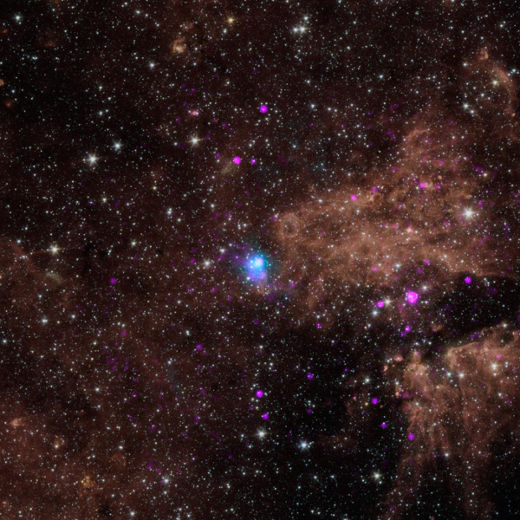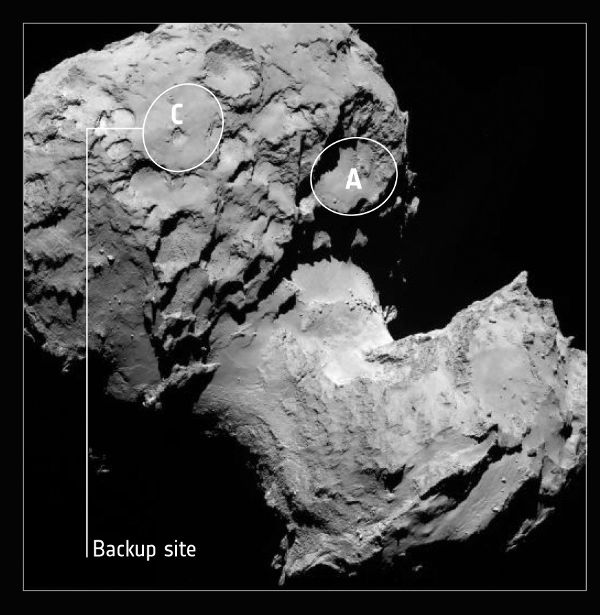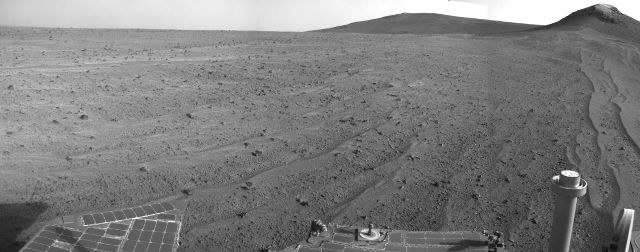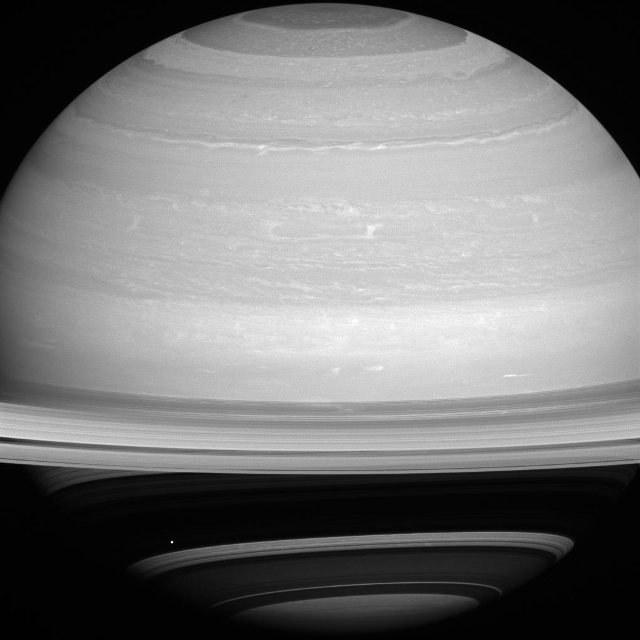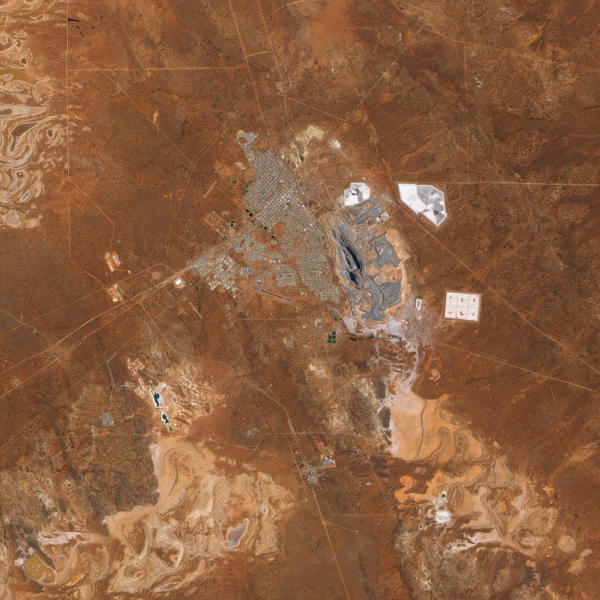
Gold is a metal that has several unique properties and has long held a special place in human society. Whether its origins lie in supernova nucleosynthesis or the collision of neutron stars, gold has been associated with value due to its rarity, malleability, resistance to corrosion, pleasing colour and specialized industrial applications. Gold’s symbol is Au and its atomic number is 79.
The Advanced Land Imager on NASA’s Earth Observing-1 took this picture of the “Super Pit” gold mine near the town of Kalgoorlie which lies in the semi-arid region that is Western Australia. This open pit gold mine is a joint venture between Barrick Gold and Newmont mining. It produces approximately 850,000 ounces (28 tonnes) of gold per year.
